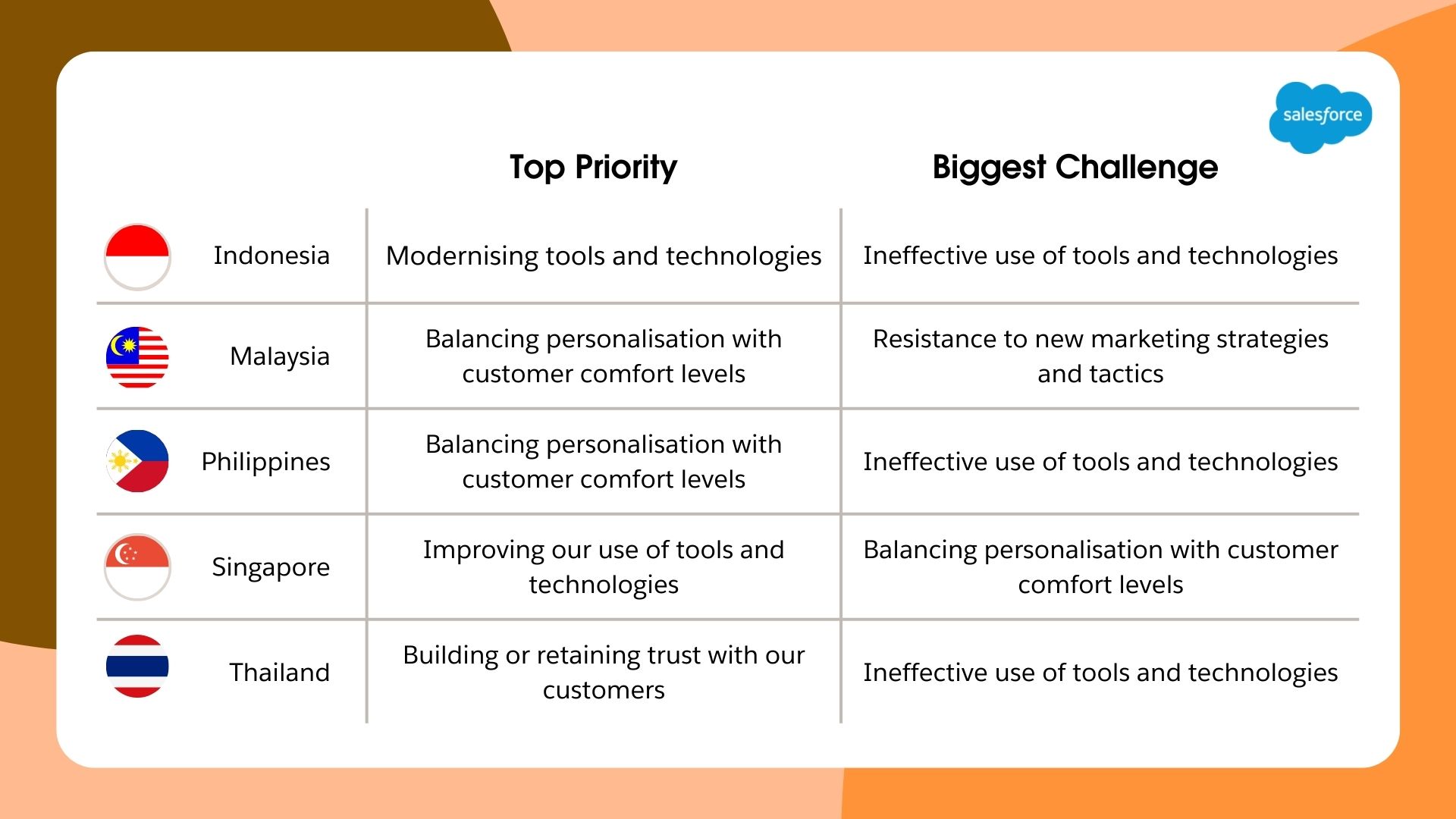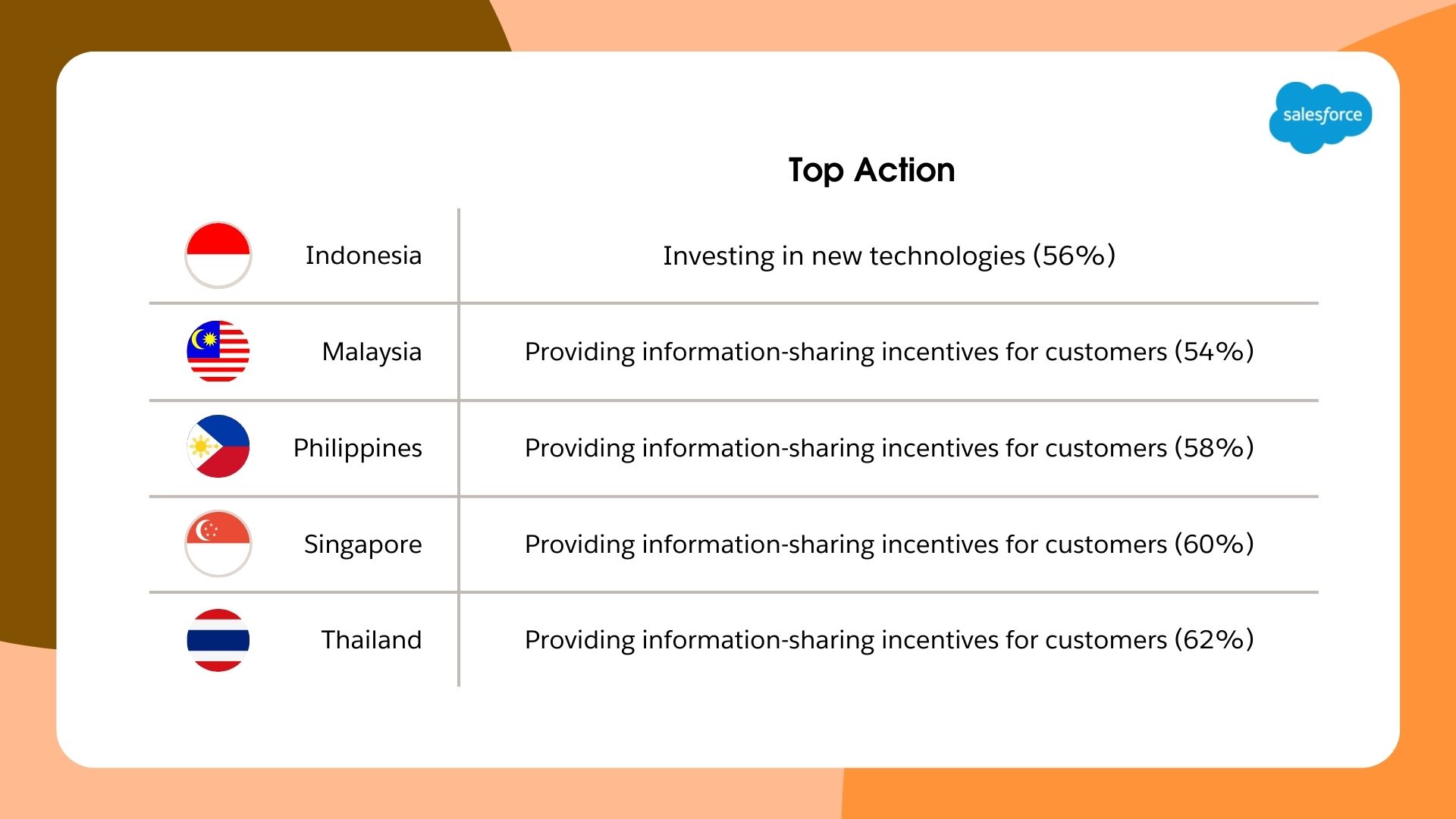Get your FREE 30-day trial.
Start by selecting a product:
We surveyed 6,000 global leaders to find out how new technologies and expectations are changing the way businesses build relationships with customers. Here are the key findings and tips for success from our newest State of Marketing report.
Over the past few years, marketing trends have forced brands to navigate uncharted waters. Shifts in customer behaviours, an economy in flux, and emerging technologies are all rocking the boat.
You can help your company weather the storm by embracing tech tools, personalising your customer interactions, preparing for a cookieless future, and prioritising collaboration with remote teams. The key is to focus on the right solution for right now.
We’ve identified four major marketing trends from Salesforce’s latest State of Marketing report. These trends are changing the way we work and how we connect with customers.
New challenges call for innovative solutions. As customer expectations shift, marketers are adapting to meet audiences’ new demands. More than 90% of CMOs around the world say they must continually innovate to remain competitive. Over the past year, marketing organisations have changed their top priorities to make this happen.
As businesses are charged with doing more with less, many ASEAN marketers are looking to leverage marketing tools and technologies. The ineffective use of these tools and technologies is also the top challenge for marketers in Indonesia, the Philippines and Thailand.
Trust is another major concern — consumers are growing increasingly uncomfortable with the way their data is handled. Many marketers are working on ways of reassuring their customers and using data responsibly. Marketers in Malaysia, the Philippines and Thailand listed issues relating to trust as their top priority.

Data has gone from being a supporting player in a marketer’s toolkit to a critical component in marketing strategy. Marketers need to get the most from technology that uses data to provide more personalised interactions. At the same time, you may find that costs are lowered and processes become more efficient. In fact, customers have told us that Salesforce marketing tools lower their customer acquisition costs by 27%*.
Marketing organisations around the world use the following technologies:
According to our report, 80% of marketers around the world say customer experience is a key competitive differentiator. They also say that they are hungry for more connected data in order to deliver better experiences. Marketing trends show that organisations continue to increase the number of data sources they’re using each year — with a projected total of 18 in 2023.
Marketers are using technologies like CRM systems and ABM platforms to unify data and deliver targeted campaigns, while leaning on AI to integrate automation into their marketing activities. Three of the top four AI use cases are related to automation, highlighting the importance of scaling up speed and effectiveness with existing resources.
Marketers are also focused on getting the most out of limited budgets and resources to meet audiences where they are. We found that 83% of marketers around the world say their marketing organisation engages customers in real time across one or more marketing channels.

As deadlines to phase out third-party cookies continue to be delayed, 75% of marketers worldwide say they still rely on third-party data. However, they aren’t allowing this to impede progress.
Our study shows that 68% of marketers around the world have created a fully defined strategy to shift toward first-party data as they adapt to changes in privacy regulations and calls for data transparency. Streamlining the number of data sources will also help marketers be more efficient and reduce costs.
While not all third-party data is cookie-related, marketers will need to reconcile this strategy with future changes in privacy regulations. Strategies such as providing information-sharing incentives for customers can help bridge the gap by enriching customer data profiles.
The growth of data sources in the near term highlights the need for technology that will help marketers combine multiple data sources into a single view of the customer. Current marketing trends back this up: Around the world, 32% of B2B marketers say that sharing a unified view of customer data across business units is a challenge. The numbers across our region paint a slightly different picture, with some marketers struggling more than others. Only 28% of marketers in Indonesia and the Philippines say that sharing data is a challenge, for example. The number climbs to 32% in Thailand, 35% in Singapore, and up to 45% in Malaysia.
Remote work has fundamentally changed the marketing landscape, making collaboration that much more difficult. We found that 69% of marketers around the world say it’s harder to collaborate now than before the pandemic.
Many marketers continue to juggle communications, processes, collaboration, and problem solving, all while working in a hybrid world. And they believe this marketing trend is here to stay — 70% expect investments in remote technologies to be permanent. In response, marketers are investing in collaboration technologies to ensure that work gets done, regardless of location.
Marketers who said they use the following collaboration technologies:
Marketing organisations have adapted to the shifting needs of their workforce, adopting an average of four collaboration technologies to unify global marketing teams.
Taking the lead are technologies like video conferencing, channel-based collaboration platforms like Slack, instant messaging or chat apps, and enterprise social networks. While email makes it into the top five, it’s clear that communication tools that enable instant, asynchronous work are preferred when interacting with one another.